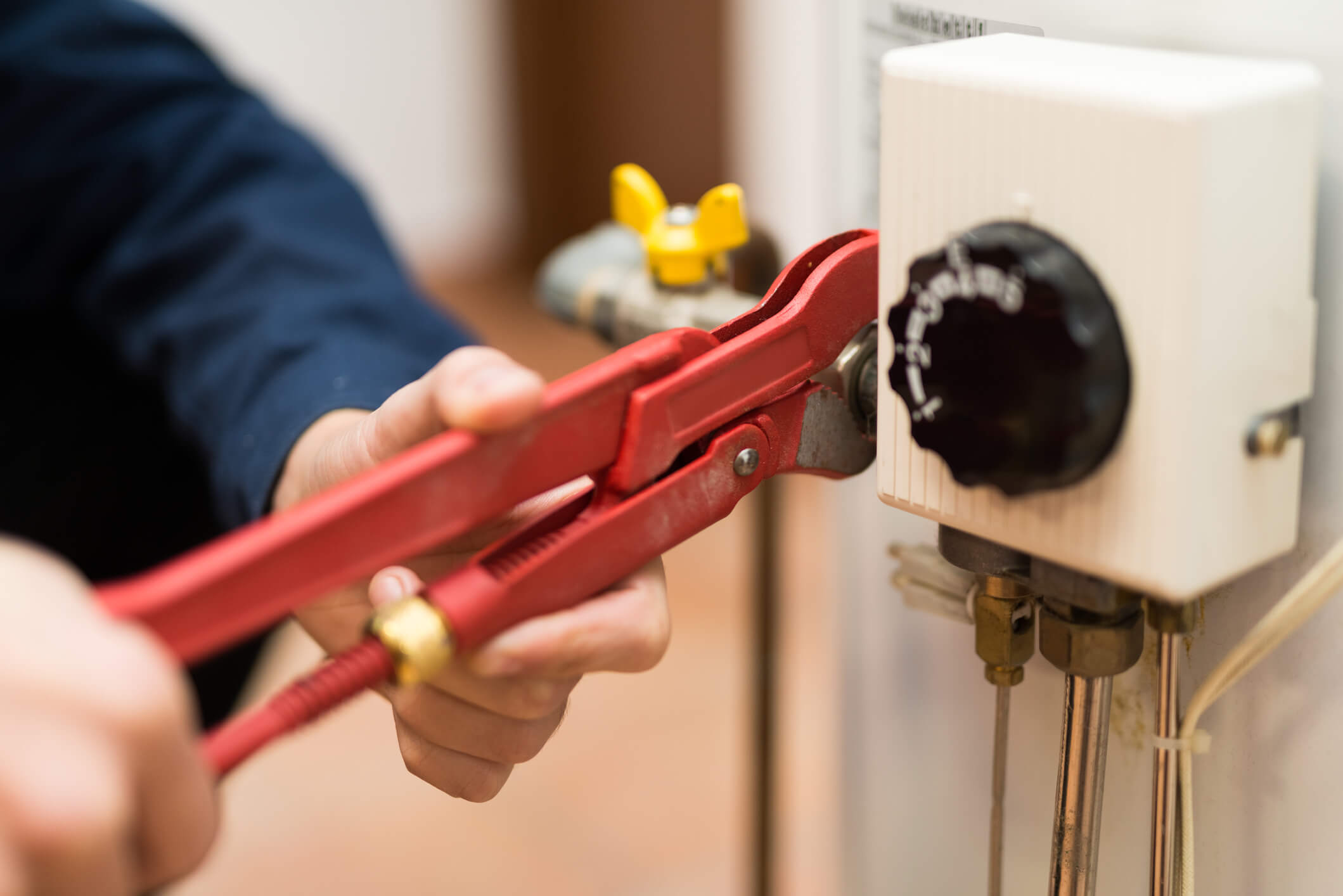The water heater is an important part of the plumbing in homes and businesses. This appliance can last at least a decade, so long as it receives regular maintenance and repairs along the way. The Gainesville plumbers with Quality Plumbing of Gainesville Inc. offer these five easy tips for maintaining your residential or commercial water heater.
Check The Temperature-Pressure-Release (TPR) Valve
The temperature-pressure-release (TPR) valve is a crucial part of any water heater. This valve is a safety device that automatically releases water if either the internal tank pressure or the temperature exceeds safe levels. To check the valve, turn off the water heater’s power and cold water valve. Put a bucket underneath the valve pipe and lift the valve tab to release a small amount of water, then release the tab. If the valve is functioning properly, water will stop draining when you let go of the tab. If not, drain one-third of the water from the tank, remove the current TPR valve, and replace it with a new one. Better yet, call Quality Plumbing of Gainesville Inc. for water heater service and repair!
Examine The Anode Rod
The anode rod, also known as a sacrificial anode, is a long cylinder of aluminum or magnesium attached to a core made from steel wire. Aluminum, magnesium, and other types of metals react to prolonged water exposure, such as being submerged in a water heater tank. The anode rod corrodes at a faster rate than the tank.
To examine the anode rod, attach a hose to the drain cock, located on the side of the tank. Drain three to four gallons of water from the tank, unscrew the rod from the top of the tank, and pull the rod out. If you can see six inches or more of the steel core wire, replace the anode.
Adjust The Water Temperature Dial Up Or Down
For electric water heaters, the temperature dial is usually found on the side of the tank. Using a small flathead screwdriver, remove the cover and adjust the temperature dial to 120 degrees Fahrenheit. Gas-fueled water heaters generally have a thermostat dial on the gas valve. Check the dial and turn it down — or up — to 120 degrees Fahrenheit.
This specific temperature is recommended for most water heaters. Yet, many water heater manufacturers set the temperature at 140 degrees Fahrenheit by default. Not only does this high temperature present a safety risk from scalding the skin, but it also requires more energy to heat the water, resulting in higher utility bills.
Drain The Tank & Flush Out Sediment
Using a bucket, drain the rest of the water from the tank with a hose. Flush any sediment build-up on the bottom of the tank by opening the cold water supply valve for several seconds. Repeat this process until the water in the hose is clear. Once the water is clear, remove the hose, close the drain cock, refill the tank, and turn the power supply back on.
Insulate The Water Pipes
Insulating the hot and cold water pipes connected to the water heater is a great way to conserve energy and water and save money. The best foam insulation to use is self-sticking and ⅜-inch thick. The insulation should be the same diameter as the pipes’ diameter for an appropriate fit. Fit the foam insulation over the pipes as far as you can reach then peel off the tape covering and close the opening.
Schedule Plumbing Services In Gainesville, FL
Even if you’re diligent about water heater maintenance, it’s not uncommon for an issue to develop. Whether there’s a slow leak or an unexpected Gainesville plumbing issue, such as a plumbing emergency, you can count on Quality Plumbing of Gainesville Inc. to respond promptly and make the necessary repairs. Call us today to schedule an appointment.
